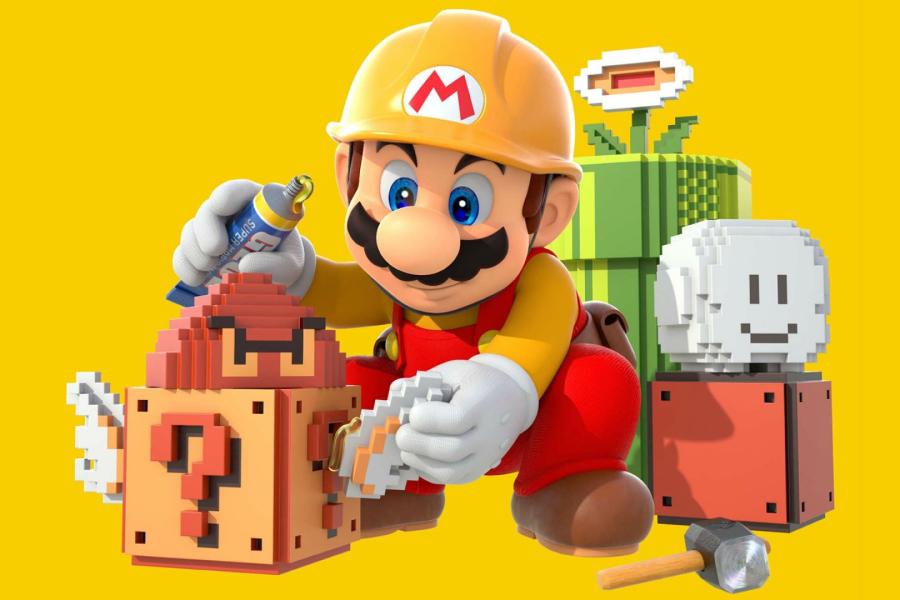Most games offer the idea that the player is free to explore branching pathways or a large system. In reality, these paths almost invariably lead back to the same major road. After all, most stories must come to an end at some point. As a result, some player groups take it upon themselves to design their own rules, resulting in the emergence of a new style of gameplay.
As a result, a fan mode in a game differs from a mod in that it does not alter the game’s original code. Fan modes, on the other hand, simply introduce new ways to play within the game as it was launched, usually through a set of self-imposed constraints. Custom fan-made modes have been fully adopted as the heart of the gameplay loop in games like “Little Big Planet” and “Super Mario Maker.”
Fan modes are becoming increasingly popular as social media networks and game venues converge. Here are just a few of the incredibly innovative fan modes that dramatically transform the game from which they arose.
Speed Running
Have you ever attempted to do a task faster than you have in the past? Have you set a few goals for yourself and repeatedly tested your abilities? It could be a morning habit, such as finding the quickest route to work, or it could be how quickly you can beat “Super Mario Bros.” in one session.
Setting personal and community records for completing a specified goal in a game as quickly as feasible is known as speedrunning. It could be completing the game from beginning to end, beating the first boss, or even speedrunning to uncover Mario’s nipple in Super Mario Odyssey (via Speedrun). Regardless of the performance, speedrunning is an insane sport in which athletes attempt to shave off a tenth of a second in order to create a new world record.
Speedrunning has long had a presence among esports at significant gaming conferences, dating back to the Nintendo World Championship in 1990, where contestants aggregated their high scores of “Rad Racer,” “Tetris,” and “Super Mario Bros.” By hosting tournaments like GDQ, speedrunning communities have earned a superb reputation in the gaming world (Games Done Quickly). Every year, these events raise millions of dollars for charity efforts. Speedrunning has solidified itself as a symbol of community-driven playstyles, thanks to the emergence of marathon charity campaigns and streamer culture.
Pokémon – Nuzlocke and Ludlocke
Over the course of 30 years, the “Pokémon” gaming model has been perfected, resulting in one of the most powerful brands in all of entertainment. Despite its origins as a children’s game, the “Pokémon” franchise has a devoted following of lifetime hardcore fans who find ways to toughen up the task far beyond the Elite Four or Catching ‘Em All challenges.
A Nuzlocke run has become synonymous with “player-enforced hard mode” across multiple gaming groups, according to Vox, after being inspired by a particularly nasty webcomic. The player must catch just the first Pokémon spotted on each route and name it in order to build an attachment, according to the rules of a Nuzlocke. If that new friend ever passes out, it is regarded dead for all time and is freed. If the player loses all of their Pokémon, the Nuzlocke run is considered a failure.
The Nuzlocke invites strategy gamers, unlike the “Pokémon” games, which are developed with accessibility in mind. What was once a lovely stroll through the Kanto area has turned into a difficult journey. Bushes are no longer a happy source of catchable Pokémon. Instead, they serve as landmine-strewn battlegrounds in which the player tries to escape hearing the terrible phrase “A wild Rattata has appeared.” Nurse Joy is no longer able to heal your Pokémon pals.
For those who aren’t impressed by the Nuzlocke challenge, popular Twitch streamer Ludwig Ahgren has launched the Ludlocke challenge, which takes the concept even farther. The new regulations include naming captured Pokémon after Twitch chatters, who will subsequently be banished for the rest of the Ludlocke if their namesake dies. Also, Ludwig has forbidden the use of potions in warfare.
League of Legends – AMRAM
“League of Legends,” a gaming industry behemoth for more than a decade, is one of the most popular games in the world, with over 115 million active monthly users in 2021. Summoner’s Rift, the game’s main map, has weathered the test of time thanks to its industry-standard three-lane layout. However, there are occasions when playing vanilla isn’t enough enjoyment.
Because there was no official ARAM mode in the early days of matchmaking, ARAMs began as custom games or player-led initiatives, according to Vandiril on YouTube. Early ARAM regulations stated that players could not leave the midlane at any time. Players were also forbidden from returning to the team fountain, farming surrounding jungle camps, or doing anything other than dying outside the midline.
With the release of the Howling Abyss in 2012, Riot Games fueled the fires by converting the introductory map into an ARAM-specific map. Players could no longer recollect the fountain or wander beyond the now-singular lane’s borders. Over time, Riot Games implemented ARAM-specific game balance to combat long-range champion domination.
ARAM is still the second most popular way to play “League of Legends” today. As a fan favorite, ARAM matches have been produced with celebrity groups at significant “League of Legends” competitions. To put it another way, this fan mode revolutionized the game forever.
Fallout 4- Pacifist Runs
Few action RPG franchises are as well-loved as the “Fallout” series, and the buzz surrounding “Fallout 4”’s release in 2015 equaled that of any other AAA title — as did its violence. “I can’t tell you that you can play the whole game without violence – it’s not necessarily an aim of ours – but we want to embrace varied play styles as much as we can,” Bethesda director Todd Howard told The Guardian in 2015.
It turns out that playing without violence is a goal for a lot of people. “Fallout: New Vegas” allowed players to delve into layers of deception, deception, and social manipulation. In contrast, “Fallout 4” appears to expect the bodies to pile up regardless of the player’s choices.
A tiny number of pacifist “Fallout 4” gamers took it on as a challenge to figure out a way to finish the game without killing a single person, robot, animal, or Radroach. The procedure itself, as explained by Kotaku, is insane: everything revolves around a single perk, “Wasteland Whisperer,” which allows players to soothe NPCs.
Kyle Hinckley, a YouTuber, documented his whole successful pacifist run in 2015, showing how he and his community came close to breaking the game numerous times while completing it without conflict. There are a few inevitable deaths that stymie the story’s progression, forcing Hinckley to discover how to get those specific NPCs to kill themselves.
Skyrims – Vegan Runs
Veganism has to be one of the most difficult ways to play “Skyrim” out of all the possible versions. At first look, it doesn’t appear to be much of a problem – just cook some greens around the campfire instead of a steak, you know? It couldn’t be that difficult to refrain from killing animals or using animal products, could it?
It certainly could, and it is. PCGamesN’s Cian Maher points out that as soon as the protagonist’s head escapes execution at the start of the game, you must instantly remove all of your leathers. Make sure you don’t utilize that sinew-strewn bow or those meat-loving blacksmiths’ metal armors and weapons. You must also choose the correct faction for your new lifestyle because the Stormcloaks are usually wearing and decorating with furs. Keep it herbal, and instead of killing any attacking animals, lead them to greener pastures.
Except for dragons, which aren’t exactly “real” animals — and since the protagonist must officially ingest their souls to win the game. “Souls aren’t tangible, so they’re not really an animal product, right?” Maher said.
It is entirely possible to beat “Skyrim” as a vegan as long as players can bend a few rules concerning the nature of absorbing dragon souls.
Mount and Blade 2: Bannerlord – Archers only
The troop type is extensively emphasized in strategy war games. The infantry usually goes in front, the archers behind them, and the cavalry on the sides. While this strategy’s historical accuracy may vary, its adaptability does not. But what if adaptation is no longer a factor? Like, so far out the window that the player doesn’t contemplate any other option for victory except volleys of arrows arcing over the battlefield?
When a fight in “Mount and Blade 2: Bannerlord” starts, opposing armies are spread out throughout the simulated terrain, giving players time to build up a general configuration before the battle begins. In a “archer only” game, instead of putting up a conventional formation, the player simply sits on a hilltop and waits for the opponent to assault, releasing every arrow available until the attack reaches the first rows. The player pauses the game and pushes retreat at the vital moment of breakthrough.
Although the engagement is officially declared a “defeat,” the casualty tables reveal a different picture. At the end of the conflict, every soldier who died or had a catastrophic injury would be recorded. Once the crowd has thinned out and the player has withdrawn, they may simply engage the same army again and repeat the process until the enemy army resembles a porcupine due to the sheer volume of arrows.
Minecraft – Nomad Run
In keeping with the trend of limiting the player’s resources, “Minecraft” Nomad runs stipulate that players can only keep what they bring with them and must never sleep in the same place twice. It’s been dubbed “extreme inventory management,” “hardcore survival,” and even “an exercise in not hoarding.” Whatever it is, the unique hook in this fan mode is more than meets the eye.
You must keep moving and build your own resources in Nomadic runs, which means you only have what you can carry. When each new shiny piece of gear costs a full inventory slot to keep, it means even more. Everything becomes more valuable when hoarding is eliminated.







